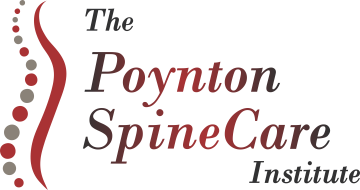Excellence of care and measurement of outcomes are the cornerstones of clinical practice at the Poynton SpineCare Institute. The Institute’s philosophy of comprehensive care is based on careful assessment followed by individualised treatment plans for each patient.
Surgery Performed by Consultant Surgeons in The Poynton Spine Care Institute include -
Lumbar Microdiscectomy
Lumbar Decompression
Lumbar Fusion
Anterior Cervical Discectomy & Fusion
Artificial Disc Replacement
Dynamic Stabilisation
Minimally Invasive Procedures
Scoliosis and Kyphosis Correction
Spinal Tumor Surgery
Robotic assisted spine surgery
Extreme Lateral Interbody Fusion (XLIF)
Cortical Lumbar Pedicle Spine Fusion
The Institute aims to provide a multidisciplinary approach to both non-operative and operative spinal care. Surgical intervention is appropriate in severe cases and cases where non-operative interventions have failed. Spinal surgery has advanced considerably over the years and can be performed safely with good outcome in the majority of cases. Surgeons at The Poynton Spine Care Institute are fellowship trained which means that they have trained specifically in spinal surgery and can provide a wide spectrum of surgical solutions.
The key to success in spinal surgery is to select the correct operation for the correct patient, execute the surgery with technical precision, and follow this with a multidisciplinary approach to rehabilitation. Patients must be confident in their surgeon’s ability to assess their pathology correctly, devise the correct surgical strategy and deal with any eventuality. This approach applies equally across the spectrum from minimally invasive surgery to large open complex surgery.
Surgery Performed by Consultant Surgeons in The Poynton Spine Care Institute include -
· Lumbar Microdiscectomy – this is a very common surgery performed for disc herniations that do not settle after appropriate non-operative management. The surgery is usually carried out through a small keyhole incision under magnification.
· Lumbar Decompression – this involves removal of bone and ligament that has overgrown and is causing pressure on nerves and /or spinal cord. The surgery is normally performed through a keyhole incision but in cases where there are multiple pinch points a bigger incision is required.
· Lumbar Fusion – spinal stabilisation/fusion using screws and rods is frequently required in situations when the spine is unstable or has become worn out and painful. We use a variety of techniques including minimally invasive, robotic assist and conventional open surgery.
· Anterior Cervical Discectomy & Fusion – removal of disc and bone followed by fusion with a plate is frequently required in cases where the spinal cord and nerves are pinched. This surgery is performed through the front of the neck. The surgery can be performed safely without complication in the vast majority of cases.
· Artificial Disc Replacement – in appropriately selected cases replacement of the disc with a prosthesis that preserves motion is a good option. This is mainly carried out in the neck.
· Dynamic Stabilisation – this involves implantation of a device at the back of the spine to give stability but preserve motion. It is reserved for cases of low-level instability following spinal decompression.
· Minimally Invasive Procedures – a large percentage of spinal surgery can be performed through small keyhole incisions with the aim of reducing muscle damaging and promoting early recovery.
· Scoliosis and Kyphosis Correction – this is highly complex and invasive surgery and is performed by our surgeons in selected adult cases. We do not perform paediatric spinal surgery.
· Spinal Tumor Surgery – tumors can grow in or around the spinal cord and nerves and also in the spinal column. Surgery usually involves removal of the tumor and reconstruction of the spine.
· Robotic Assisted Spinal Fusion – using the GPS Exelcius robot, this is the newest technology in the world of spinal surgery, the advantages of robotic assisted spinal fusion include the accuracy of placement of the pedicle screws which has an accuracy rate of more than 95%. The spine fusion using robotics usually involves keyhole surgery, a muscle sparing approach, in which it reduces intra-operative blood loss, early mobilisation, reduced post operative use of opioid based pain killers and an early return to work.
· Extreme Lateral Interbody Fusion (XLIF) – a keyhole spinal fusion performed from the side, during the procedure intra-operative neuromonitoring is used (to check the nerves), this again is a keyhole surgery. For patients with multiple previous back operations this procedure could be ideal as one does not have to fight the scar tissues, this procedure also improves the capacity of spinal canal called indirect decompression, sometimes the lateral approach is supplemented with posterior pedicle screw fixation.
· Cortical Lumbar Pedicle Spine Fusion – a new concept of spine fusion, keyhole spine fusion, minimal muscle dissection and blood loss, good approach for patients with weak bones (osteoporosis/osteopenia), early mobilisation, no significant post operative pain, early discharge and return to work.
“Excellence of care and measurement of outcomes are the cornerstones of clinical practice at the Institute.”

